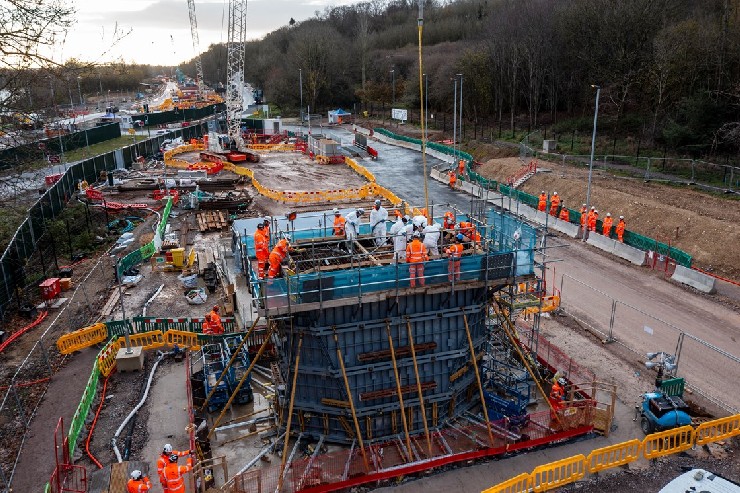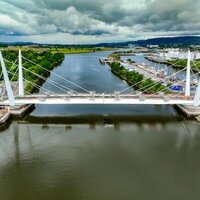The 3.4km-long Colne Valley Viaduct will be the UK’s longest rail bridge. The viaduct, which is being built as part of the HS2 rail project, will carry high-speed trains travelling at speeds of up to 320km/h between the outskirts of Hillingdon and the M25 on their way to Birmingham and the north.
The first pier was cast by engineers from HS2’s main works contractor Align JV – a team made up of Bouygues Travaux Publics, Sir Robert McAlpine, and VolkerFitzpatrick – and working in partnership with Kilnbridge.
The 6m-tall, 370t reinforced concrete pier was cast on site by a team of engineers who used specially-designed formwork to create the shape of the structure. This was then removed after four days to reveal the final product.

Each pier rests on a set of concrete piles going up to 55m into the ground. This foundation work began earlier this year and will require the construction of 292 piles and 56 pile caps across the whole length of the viaduct.
HS2 Ltd’s project client David Emms said: “The Colne Valley Viaduct will be one of HS2’s most iconic structures and it’s great to see how much has been achieved already. I’d like to thank the whole team for the huge amount of work they’ve done to get us to this point.”
Align’s project director Daniel Altier added: “I have no doubt that the viaduct will become one, if not the most striking element of HS2 phase 1 once complete. The way it will be constructed is going to be equally fascinating for engineers young and old. The sections for the deck will be fabricated at our main construction site to the west of London just inside the M25, and using a huge launching girder, the deck will be formed from north to south, along the line of the route, thereby keeping unnecessary construction traffic off the roads.”
The design of the Colne Valley Viaduct was inspired by the flight of a stone skipping across the water, with a series of spans, some up to 80m long, carrying the railway around 10m above the surface of the lakes, River Colne and Grand Union Canal.
Wider spans will carry the viaduct where crosses the lakes, with narrower spans for the approaches. This design was chosen to enable views across the landscape, minimise the viaduct’s footprint on the lakes and help complement views across the natural surroundings.
The main deck of the viaduct will be built in 1,000 separate segments at a temporary factory nearby before being assembled from north to south, starting next year.



